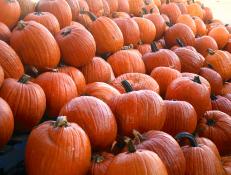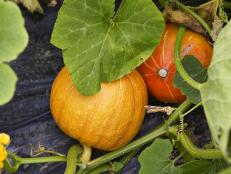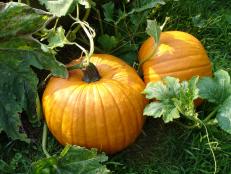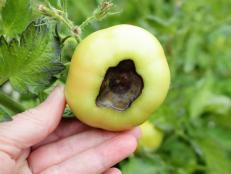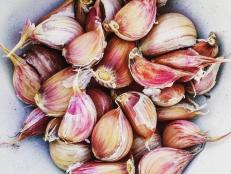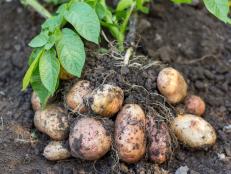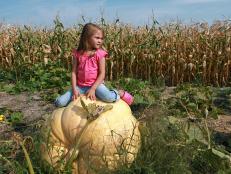Pumpkin Growing Tips

Image courtesy of Jessica Yonker
Pumpkins aren’t just an autumn icon; they’re also one of the garden’s most fun and easy crops to grow. Farmers who grow giant pumpkins elevate raising these fruits to an art, but it’s really not that difficult. Try these tried-and-true pumpkin growing tips, and you’ll be set for success as you tend your own pumpkin patch.
Start with a known pumpkin variety. You’ll often see pumpkin seedlings for sale that are labeled simply as “pumpkin.” When growing pumpkins, choose one that will deliver what you and your family want. You can find pumpkins suitable for carving, baking, painting, and creating colorful autumn displays. You can even grow miniatures suited for small hands to hold. Do your homework and get seeds—or seedlings—for the type of pumpkin you’ll enjoy most.
Pumpkin-palooza! 10 Pumpkin Varieties
See All PhotosPlant pumpkins in a different spot each year. Like all vegetables, you need to rotate or move pumpkin crops from year to year. Ideally, keep pumpkins on a three-year rotation cycle, meaning you don’t plant them in the same spot for three years in a row. This allows soil to replenish nutrients vines remove, and it also helps foil diseases that may survive in soil over winter.
Pumpkins have male and female flowers. Male flowers appear first for about a week before any female flowers appear. Male flowers stand tall on upright stems; female flowers have what looks like a miniature pumpkin at their base. If a female flower is pollinated, that miniature pumpkin starts growing. If no pollination occurs, the female flower—with its mini pumpkin base—falls off the vine.
Mature pumpkins are 80 to 90 percent water, so you can bet that pumpkins need a lot of water as they grow. Irrigate plants when soil is dry. It’s typical for pumpkin leaves to wilt at high noon, but if plants are wilted in the early morning, that’s a sign you need to water. Aim for deep, infrequent watering to encourage deep root growth. Copy the giant pumpkin farmers and use a soaker hose or drip irrigation.
Start decreasing the amount of water you’re providing pumpkin plants when fruits turn their mature color. If you intend to store pumpkins for winter use, they’ll store longer if you stop watering completely a week to 10 days prior to harvest.
Save seeds from this year’s pumpkin to plant next year. You can only save seeds from pumpkins that aren’t hybrids. Research online to make sure you’re not growing a hybrid. To save seeds, place seeds and pulp in a colander. As you run warm water over them, start picking out individual seeds. Use a gentle detergent to help remove pulp. For most home gardens, you only need to save two dozen seeds at most. Drain the seeds on a strainer, then place on a screen suspended over a box lid. Place the seeds in a warm, dry place. Stir seeds frequently the first few days to promote drying. Dry seeds at least two weeks—longer is even better. They must be completely dry before storing, or they’ll mold. Store seeds in an envelope, paper bag, or non-airtight jar in a cool, dry place. Be sure to label your container.










